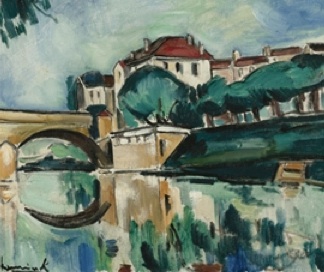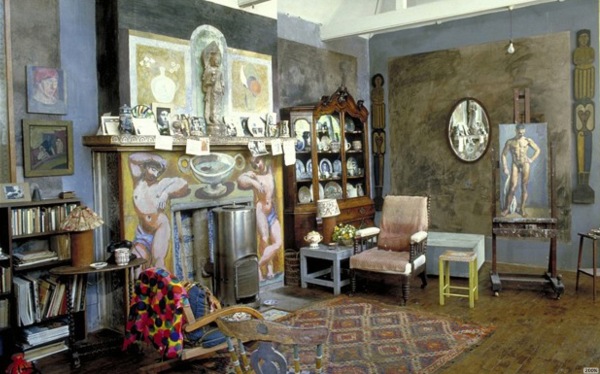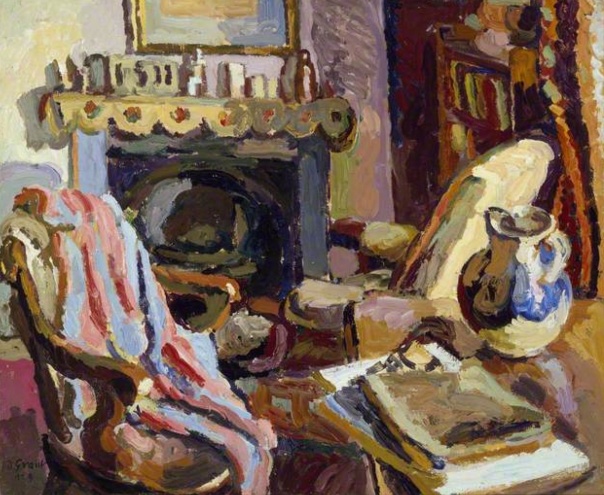Vanessa Bell copies a painting by Maurice de Vlaminck before Selling it in Paris

The painting Vlaminck created in 1910, of the river and bridge is, however, restrained in its use
of colour, and reminds one more of a Cézanne of the 1890s; it is certainly not an example of a painting from Vlaminck's Fauve period.

This canvas, named simply Le Point de Poissy (60cm x 80cm), was shown in London by Roger Fry in 1910 as part of his exhibition of
more than 200 pieces at the Grafton Galleries in Mayfair which he called
Manet and the Post Impressionists.
This was the first
post-Impressionist exhibition to be mounted in London and in fact was the first in the anglophone world. The exhibition caused an immediate and highly volatile reaction. An art critic for The Pall Mall Gazette, for example, described the paintings that were shown as being the "output of a lunatic asylum". Edwardian tastes in art were, at that time, still firmly controlled and delimited by traditional Victorian sensibilities and would not move forward until after the shock waves of seismic disruption had penetrated English society, during and following World War I.
Clive
and Vanessa Bell must have studied this painting and considered
purchasing it at the time, since four years later in Paris they acquired it
from its Parisian art dealer Kahnweiler.
Much later in their marriage they decided to sell the painting, but before doing so, Vanessa made a copy in oil on canvas, which may
now be seen in the Charleston Farmhouse in Firle, East Sussex.
The copy does not attempt to be a
'close copy' of the original painting but rather it is a Vanessa Bell
painting, taking as its starting point the original painting by Vlaminck. It therefore constitutes a painting which may be seen as a fusion of styles from two distinct post-impressionistic painters.

Vanessa experimented with a wide variety of styles. These changed and evolved during her life. The portrait of Dora
Morris (shown below) seated next to a dresser with her reflection shows Vanessa's ability to convey delicate nuances of personality and subtlety of feeling in a masterly manner.

In the still-life below one may experience a lightness and loveliness of colour in the fruit which can remind one of some of the paintings she made for covers of her sister Virginia Woolf's books, which were printed by the Hogarth Press.

To see a slide show of Vanessa's paintings and watercolours click here.






